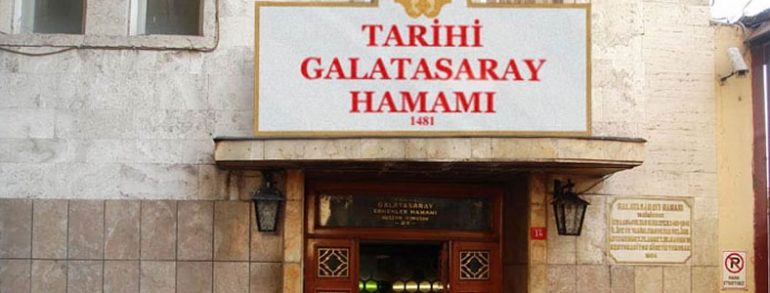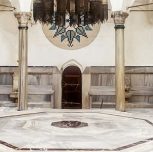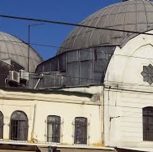The Galatasaray Hamam was built by Bayezit II in 1481 with the Galatasaray Külliyesi (complex of buildings adjacent to a mosque). It is located in the Galatasaray neighborhood of the Beyoğlu district, at the junction of Turnacıbaşı and Çapanoğlu streets in Istanbul.
Although it has been said that the present Galatasaray Market was built during the reconstruction of Galatasaray Devshirme Recruits and the Palace School (Galatasaray İçoğlanları Kışlası) during the rule of Sultan Ahmet III, some researchers have claimed that this is a baseless rumor. Instead, they support the argument that the Hamam was a part of Galatasaray Külliye .
When it was restored in 1965, the dressing room was made of concrete blocks, a fountain was placed in the middle, a section of the hamam wall was covered with tile, and also a small women’s section was added.
One enteres the cold room (soğukluk) from the dressing room. There are rubbing places (keselik) consisting of seven basins. One enters the hot room (harare),which is covered by large domes, from the cold room.
In the hot room there is a navel stone (göbek taşı). On both sides of the door, there are two "halvets" (a very hot bathing cubicle in the bath) that are roofed by a dome. In addition, there are six sofas (a long room, onto which a number of rooms open) which contain more than 15 kurnas (a marble basin under a tap in a Turkish bath) of various sizes.
The Galatasaray Hamam has made it to our times through continuous maintenance and restoration. It has been consistently serving domestic and foreign visitors.










